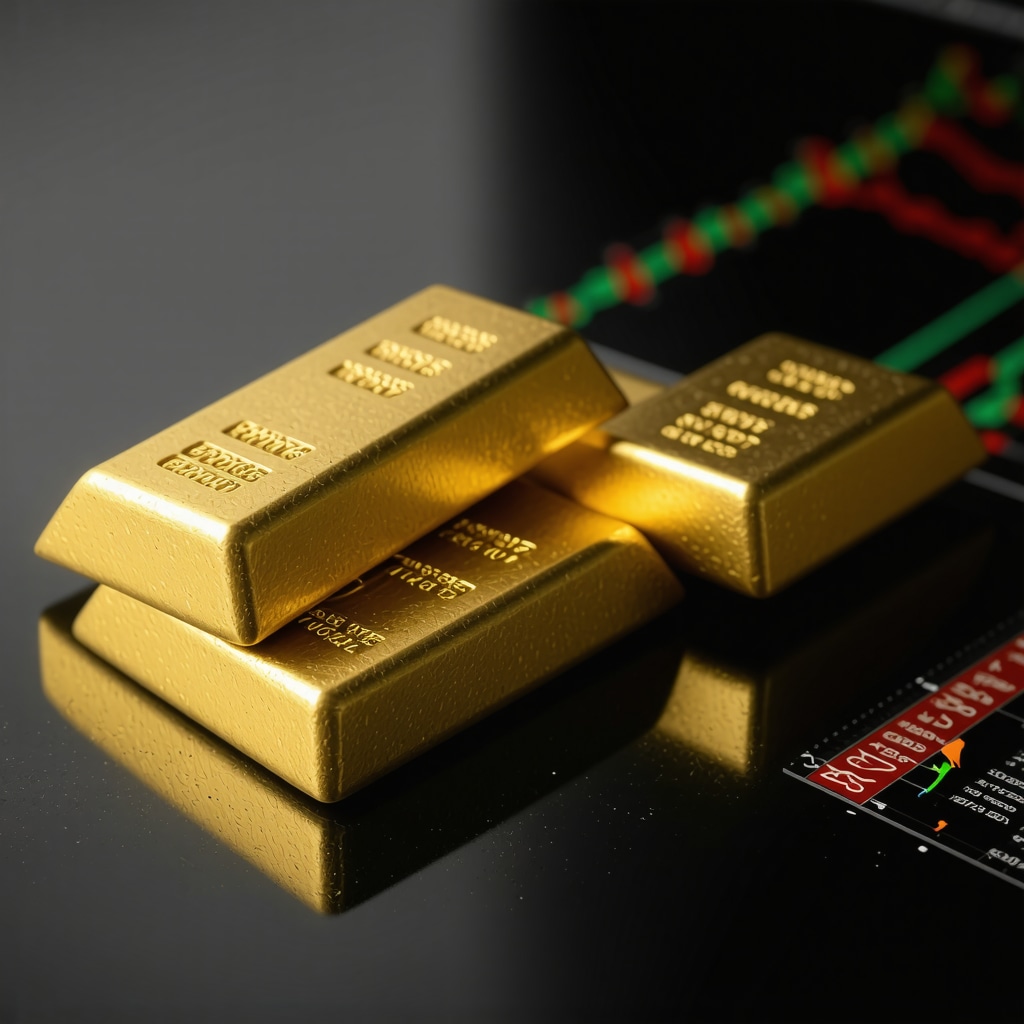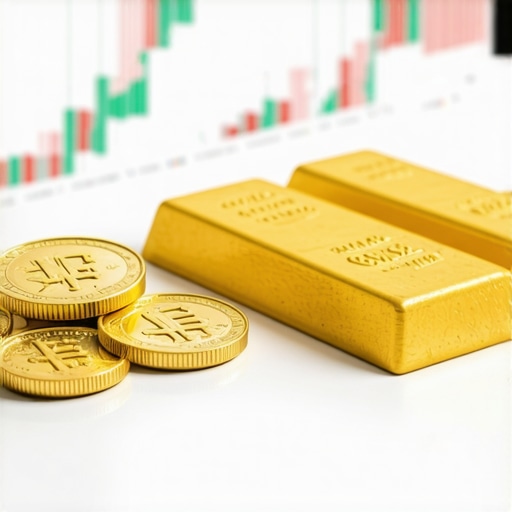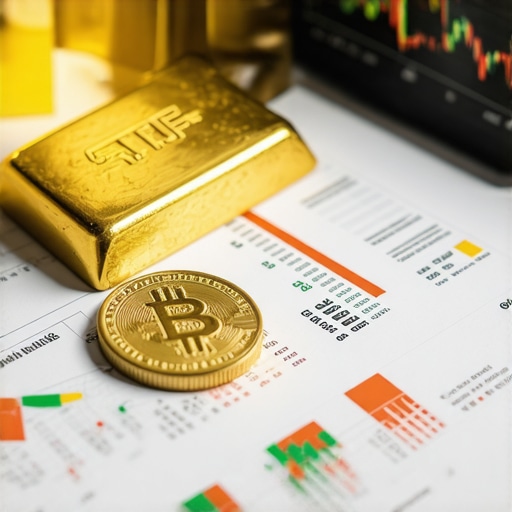My Journey Into Gold: From Bars to Futures
When I first started exploring gold investments, I was captivated by the tangible allure of physical gold. Holding a gleaming gold bar in my hands felt like owning a piece of history and security. However, as I dove deeper into the market, I realized that gold futures offered a fascinating, albeit riskier, way to engage with gold’s price movements without the need for physical storage. This personal journey made me appreciate how different investment vehicles can serve different goals.
Why Physical Gold Felt Like a Safe Harbor for Me
Physical gold, whether in bars or coins, has a timeless appeal. For me, owning physical gold meant having a hedge against inflation and economic uncertainty. I could actually see and store my asset, which gave me peace of mind during volatile times. Plus, physical gold doesn’t rely on counterparty risk, something I found reassuring after reading about market crashes.
But physical gold also demands careful consideration for storage and security. I learned about best practices for safe storage, which you can explore in this guide on physical gold investment. This aspect isn’t always highlighted but is crucial for anyone considering buying bullion.
Gold Futures: A Different Kind of Opportunity and Risk
Venturing into gold futures trading introduced me to a world driven by contracts and price speculation. Unlike physical gold, futures let me leverage my investment and potentially magnify returns, but this came with increased volatility and complexity. I had to learn about contract expirations, margin requirements, and how global events influence gold prices.
For those curious about this route, I found the understanding gold futures guide invaluable in grasping the fundamentals.
How Do I Decide Between Physical Gold and Gold Futures for My Goals?
This question lingered for me as I weighed my investment objectives. If your priority is long-term wealth preservation with tangible assets, physical gold might suit you better. On the other hand, if you’re seeking short-term gains and are comfortable with market swings, gold futures could be appealing.
Personally, I find diversifying between both strategies helpful, balancing the security of physical gold with the growth potential of futures. This approach aligns well with insights shared by financial experts like those at Investopedia, who highlight that diversification is key to managing risk in precious metals investing.
If you’ve had experiences with physical gold or gold futures, I’d love to hear your thoughts and strategies. Share your story in the comments below and let’s learn from each other’s journeys!
Balancing Liquidity and Tangibility: The Investment Puzzle
One of the nuanced decisions I encountered was balancing liquidity against tangibility. Physical gold offers tangible security, but it’s less liquid compared to gold futures, which trade on exchanges with near-instant execution. For investors requiring quick access to capital or who prefer active trading, futures present a compelling option. However, this liquidity comes at the cost of complexity and potential margin calls, which require rigorous risk management.
Diving deeper, understanding these trade-offs can enhance your investment strategy. This duality is well captured in the comprehensive analysis from the World Gold Council, which underscores the importance of aligning investment vehicles with personal risk tolerance and financial goals (World Gold Council on Physical Gold vs Futures).
Risk Mitigation Techniques for Gold Futures Trading
When trading gold futures, managing volatility is paramount. I adopted several strategies such as setting stop-loss orders to limit downside risk and using position sizing to avoid overexposure. Additionally, monitoring macroeconomic indicators like interest rates and geopolitical tensions helped me anticipate price swings effectively. Leveraging these techniques transformed my approach from speculative to strategically calculated.
For those interested in exploring advanced trading methods, this guide on advanced gold trading techniques offers valuable insights into maximizing profits while managing risk amid market fluctuations.
How Can Emerging Market Demand Influence Your Gold Investment Choices?
Emerging markets increasingly drive global gold demand, influenced by rising middle-class wealth and cultural affinity for gold. This trend has significant implications for both physical gold and futures markets. For instance, surging demand in Asia often tightens supply, nudging prices upward and creating potential profit avenues. Understanding these dynamics enables investors to anticipate price movements more accurately and adjust portfolios accordingly.
Exploring the implications of regional demand shifts, the analysis of gold demand trends in Asia provides crucial context for tailoring your investment strategy to global market currents.
If you found these insights beneficial, consider sharing this article with fellow investors or commenting below with your experiences navigating the complexities of gold investment. Your engagement enriches our collective understanding and sharpens investment acumen.
When Market Sentiment Meets Gold: Lessons Beyond the Basics
One of the more subtle realizations I encountered while investing in gold was how much market sentiment can sway gold prices, especially within futures trading. The emotional undercurrents—fear, greed, uncertainty—often ripple through the gold futures market far more rapidly than physical gold prices can respond. It’s fascinating and a bit humbling to see how macroeconomic headlines or geopolitical tensions ignite sudden futures price swings. These moments demand a calm mind and a well-honed strategy to avoid knee-jerk reactions.
This experience taught me that gold, although traditionally perceived as a safe haven, is not immune to the human psychology baked into financial markets. For those intrigued by how market psychology affects gold prices, I recommend exploring the analysis on key drivers of gold price movements which breaks down complex factors influencing gold beyond simple supply and demand.
Why I Started Exploring Gold ETFs as a Middle Ground
Curious about blending tangibility with liquidity, I eventually dipped into gold ETFs. These offered a way to gain exposure to gold’s price without the need for physical storage and with better liquidity than bullion. It felt like a middle ground—less complex than futures but more convenient than physical gold. While ETFs don’t provide the tactile comfort of holding gold bars, they represent a flexible part of my portfolio that I can adjust or liquidate without hassle.
If you’re considering this hybrid approach, the ultimate guide to gold ETFs offers a comprehensive look at how these instruments can fit into your investment strategy.
How Do I Manage Emotional Discipline When Trading Gold Futures?
Trading gold futures can test even the most seasoned investor’s emotional discipline. Personally, I found that setting predefined rules before entering trades helped immensely. This included clear stop-loss limits and profit targets, which prevented me from chasing losses or holding positions too long out of hope. Additionally, I learned that detaching from daily price noise—focusing instead on longer-term trends and fundamental factors—made my decisions more rational.
On the emotional side, mindfulness techniques and regular reflection helped me stay grounded during periods of volatility. For anyone looking to develop this discipline, advanced gold trading techniques can provide tactical methods to better navigate the emotional rollercoaster of futures trading.
Considering Central Bank Moves: A Hidden Force in Gold Markets
Another layer I grew to appreciate is the impact of central bank gold purchases and sales. These moves, often under the radar for retail investors, can significantly influence global gold supply and price trends. Watching how central banks adjust their reserves provides clues about future price directions and market confidence.
The insightful analysis on central bank gold buying helped me grasp this hidden dynamic. Integrating this understanding into my strategy added a macroeconomic dimension that deepened my market perspective.
Have you observed the effects of central bank activity in your own gold investing experience? I’d be fascinated to hear your observations and how you factor these moves into your decisions. Feel free to share your thoughts below or connect through the comments!
Decoding Central Bank Gold Activity: Beyond the Surface
Over time, my understanding of gold’s price dynamics deepened as I started closely monitoring central bank gold transactions. Unlike retail investors, central banks operate with strategic intent, influencing the global supply and demand balance in subtle yet profound ways. Their accumulation or liquidation of gold reserves often signals shifts in monetary policy confidence or geopolitical risk assessments. Observing these moves has become an indispensable lens through which I anticipate market trends.
One of the most eye-opening moments was learning how coordinated purchases by emerging economy central banks can tighten physical gold availability, thereby amplifying price pressure. Conversely, large-scale sales by certain institutions during periods of financial normalization can create short-term supply surges, impacting futures market volatility. Integrating insights from authoritative analyses such as this detailed exploration on central bank gold buying helped me contextualize these macroeconomic forces within my broader investment framework.
Behavioral Economics and Gold: An Unseen Market Driver
Beyond fundamentals, the psychological interplay within gold markets fascinated me. I noticed that gold prices often react sharply to shifts in investor sentiment, which are themselves influenced by narratives around inflation fears, currency devaluation, or geopolitical instability. These emotional undercurrents are especially pronounced in gold futures trading, where rapid speculative moves can exacerbate price swings.
Embracing behavioral economics principles transformed my trading mindset. Rather than merely reacting to headline news, I began analyzing crowd psychology signals—such as market positioning data and sentiment indexes—to anticipate potential reversals or breakouts. This nuanced approach allowed me to better manage risk and seize opportunities that purely fundamental analysis might miss.
How Can Integrating Central Bank Trends and Market Psychology Enhance My Gold Trading Strategy?
Combining macro-level insights about central bank actions with micro-level understanding of investor behavior provides a multidimensional perspective essential for sophisticated gold investing. For instance, knowing when central banks are accumulating gold can inform a bullish stance, while concurrently monitoring market sentiment can help time entry points to avoid costly volatility.
This integrated strategy not only refines decision-making but also enriches portfolio resilience amid shifting global dynamics. If you’re eager to deepen your expertise, exploring resources like this comprehensive analysis of key drivers shaping gold prices can be invaluable.
I invite you to share your experiences or questions about how central bank policies and behavioral factors have influenced your gold investments. Engaging in this dialogue sharpens our collective acumen and opens pathways to more informed strategies. Please leave your insights in the comments below or connect directly—let’s continue unraveling the complex tapestry of gold markets together.
Things I Wish I Knew Earlier (or You Might Find Surprising)
The Illusion of Safety in Physical Gold Isn’t Absolute
When I first embraced physical gold, I thought it was the ultimate safe haven. Holding bullion felt like having a fortress of wealth. But over time, I realized that tangible security comes with its own challenges — from storage risks to liquidity constraints. It’s not just about owning gold; it’s about how you protect and access it. For those considering physical acquisition, I recommend checking out my guide on safely storing physical gold to avoid pitfalls I initially underestimated.
Gold Futures Are Not Just for Speculators
I used to view futures purely as a playground for high-risk traders, but learning their mechanics revealed they can be powerful tools for hedging and strategic exposure. Understanding contract nuances, margins, and how to manage volatility transformed my approach. If you’re intrigued, the comprehensive introduction to gold futures was a game changer for me.
Market Sentiment Moves Gold More Than I Expected
Gold’s price isn’t just about supply and demand — it’s also deeply influenced by human psychology. The rapid swings in futures markets reflect fear and greed cycles that can be baffling at first. Recognizing this helped me develop emotional discipline, avoiding knee-jerk reactions to headlines. For insights, I often revisit analyses like key drivers of gold price movements that unpack these behavioral factors.
Central Banks Are Quiet Giants Shaping Gold’s Future
Initially, I overlooked how central banks’ buying and selling quietly shift the global gold balance. Their strategic moves influence price trends and market confidence more than many retail investors realize. Observing these patterns added a macroeconomic lens to my strategy. For a deep dive, this detailed analysis on central bank gold buying is a must-read.
Gold ETFs Offer a Convenient Middle Ground
Dipping into gold ETFs helped me balance between the tangibility of bullion and the liquidity of futures. Although ETFs lack the tactile feel of physical gold, their flexibility and ease of trading made them a valuable portfolio component. If you’re considering this path, my ultimate guide to gold ETFs clarifies their pros and cons beautifully.
Resources I’ve Come to Trust Over Time
World Gold Council: Their research on physical gold versus futures (here) gave me a solid foundational understanding of the trade-offs between different gold investments.
Investopedia: For clear, accessible investing basics, including diversification strategies in precious metals, their articles have been my go-to for breaking down complex concepts into actionable advice.
BuyingGoldNow.com: This site’s in-depth guides like the understanding gold futures guide and central bank gold buying analysis helped me connect dots between market mechanics and macroeconomic forces.
My Personal Notebook: Keeping a journal of my trades, mistakes, and market observations was invaluable. It’s not an external resource, but I highly recommend documenting your journey to develop insights tailored to your style.
Parting Thoughts from My Perspective
Investing in gold isn’t just a financial decision; it’s a journey through history, psychology, and global economics. Whether you lean toward physical gold’s tangible safety or the dynamic potential of gold futures, understanding the nuances behind each option empowers smarter choices. I’ve found that blending these strategies, while staying attuned to central bank trends and market emotions, crafts a resilient portfolio that can weather uncertainty.
Gold remains a beacon of stability, but only when approached with knowledge and discipline. If this resonated with you, I’d love to hear your thoughts or experiences—please share them in the comments below. And if you know someone navigating gold investments, feel free to share this article to help them along their path.











I’ve always been drawn to the tangible aspect of physical gold—the feeling of holding a real asset, especially during times of economic uncertainty. Like the author, I’ve found that owning physical gold offers a peace of mind that’s hard to replicate with other investments. However, after reading this insightful post, I’m reconsidering the role gold futures might play in an investment strategy. The idea of leveraging futures for potential growth, despite the increased volatility, seems like a way to diversify while still engaging with the gold market.
One challenge I’ve faced with physical gold is the balance between safety and accessibility; securely storing bullion requires effort and often additional expense. Futures, with their high liquidity and no need for physical storage, could alleviate these concerns but at the cost of complexity and emotional discipline, as highlighted here.
I’m curious if others have tried blending physical gold with gold futures in their portfolios? How do you navigate the emotional swings when engaging with the futures market? Do you find diversification between these vehicles beneficial or does it complicate your investment approach? It would be great to hear different perspectives on balancing these two distinct but complementary gold investment paths.